Pig prices today, March 29, have decreased in all provinces and cities. Currently, pig prices in the North range from 67,000 - 68,000 VND/kg, in the Central Highlands - Central region 66,000 - 70,000 VND/kg, in the South 72,000 - 77,000 VND/kg.
Pig prices nationwide on March 29 continued to decline
Dan Viet's records show that the price of live pigs continues to decrease rapidly in many localities, especially in the Southern region. Accordingly, the Southern market today decreased in most provinces and cities such as Binh Duong and Long An, the price of live pigs fell to 72,000 VND/kg; Ho Chi Minh City, Dong Nai, Ba Ria - Vung Tau, Ben Tre, Tay Ninh, Binh Phuoc and An Giang dropped to 73,000 VND/kg.
In Dong Thap, Tien Giang, Hau Giang and Tra Vinh provinces, the price of live pigs also dropped to 74,000 VND/kg; Kien Giang, Soc Trang and Bac Lieu all had prices of 75,000 VND/kg.
In general, localities in the Southern region are buying and selling live pigs at around 72,000 - 77,000 VND/kg.
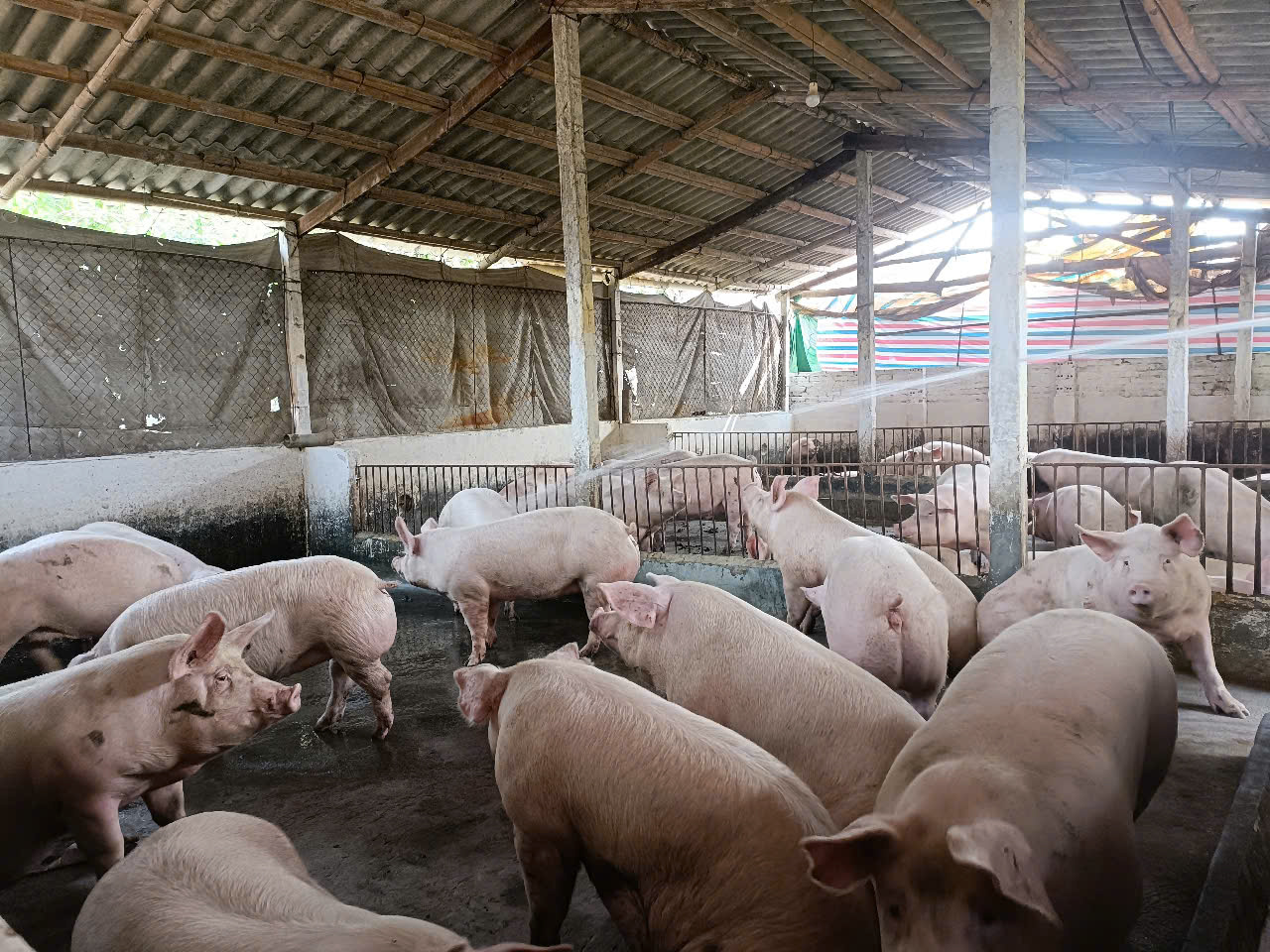
Pig prices today, March 29, have decreased in all provinces and cities. Currently, pig prices in the North range from 67,000 - 68,000 VND/kg, in the Central Highlands - Central region 66,000 - 70,000 VND/kg, and in the South 72,000 - 77,000 VND/kg. Photo: Minh Ngoc
In the Central Highlands region, the price of live pigs has decreased in most provinces and cities. Currently, live pigs here are sold at prices ranging from 66,000 - 73,000 VND/kg. Of which, Lam Dong, Ninh Thuan and Binh Thuan have the price of live pigs reaching 73,000 VND/kg, the highest in the region. Next is Dak Lak with the price of 70,000 VND/kg.
The price of live pigs in Thanh Hoa, Nghe An and Ha Tinh provinces was recorded as the lowest when the price of live pigs only reached 66,000 VND/kg.
In the northern provinces, the price of live pigs decreased slightly in Phu Tho and Vinh Phuc, to the same level of 66,000 VND/kg.
In Thai Binh and Lao Cai provinces, live pigs are sold at 68,000 VND/kg, the highest in the northern provinces.
Pig prices will continue to decrease in the coming time.
Speaking with Dan Viet, the Heads of the Department of Animal Husbandry and Veterinary Medicine of provinces and cities such as Hanoi, Bac Giang, and Hai Duong all said that the total pig herd of the localities is basically stable.
Hanoi is one of the localities with the largest pig herd in the country, nearly 1.5 million pigs. Mr. Nguyen Dinh Dang - Head of the Hanoi Department of Animal Husbandry, Aquaculture and Veterinary Medicine said that the city's current pig herd is still well maintained and has not fluctuated much.
Recently, the city has focused on moving livestock out of unauthorized areas, reducing the number of small-scale pig farms and moving towards concentrated farming to ensure environmental hygiene.
Regarding the price of live pigs, Mr. Dang assessed that because before Tet, farmers sell pigs in large quantities to supply the market, so every year, after Tet, the price of pigs increases. However, after a few months, the price of live pigs will decrease because the supply has been restored.
"In fact, last week, the price of live pigs decreased and will continue to decrease in the coming time because people sell more pigs after a new breeding cycle," said Mr. Dang.
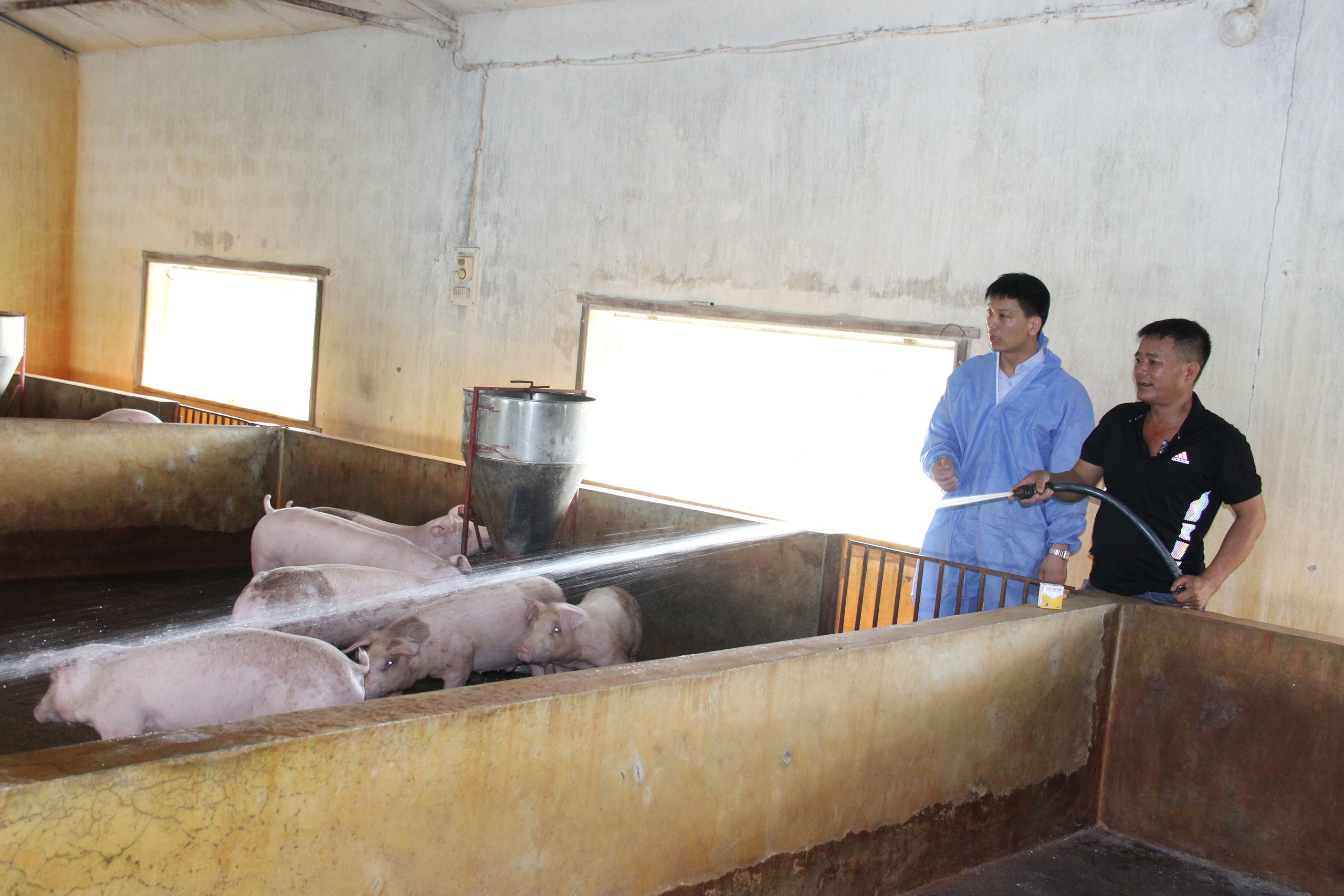
Pig farm of Mr. Nguyen Manh Dai, in Trinh Tiet village, Dai Hung commune (My Duc district, Hanoi). Photo: Minh Ngoc
In Bac Giang, Mr. Le Van Duong - Head of the Department of Animal Husbandry and Veterinary Medicine of this province said that the total pig herd of the province is currently over 870,000. "Recently, Bac Giang has also reduced small-scale farming households, instead, many concentrated, closed farming areas have been invested in on a large scale and systematically, so the total pig herd remains stable and has not decreased," Mr. Duong informed.
In Hai Duong, Mr. Vu Van Hoat - Head of the Department of Animal Husbandry, Fisheries and Veterinary Medicine said that the province's pig herd is still maintained at 470,000, a slight increase compared to the same period last year. Similar to Bac Giang, Hai Duong has strongly shifted to concentrated, large-scale livestock farming, so the total pig herd is still well maintained.
Both Mr. Duong and Mr. Hoat predict that the price of live pigs will continue to decrease in the coming time when the pig herd recovers after the supply period for the recent Lunar New Year.
To solve the problem of supply and demand, livestock farming in general and pig farming in particular, Mr. Nguyen Van Trong, Vice President of the Vietnam Association of Farms and Agricultural Enterprises, said that it is necessary to organize in a chain, because without connection, small-scale livestock farming households and farmers will be severely affected and will be the ones at greatest risk.
To build an effective production chain, enterprises must play a central role. However, in order for enterprises to be able to approach small-scale livestock households, these households first need to link together into cooperatives, cooperatives, and production household groups. This is the basis for the "links" in the chain to build sustainable cooperative relationships. Along with that, household livestock farming should focus on native, specialty, high-quality pig breeds, associated with eco-tourism. This requires a specific strategy.
In fact, the Prime Minister has issued Decision No. 1520/2020/QD-CP approving the Livestock Development Strategy for the 2021-2030 period, with a vision to 2045, along with 5 projects that have set out very clear directions, goals, and solutions.
At the same time, Mr. Trong said that it is necessary to focus on biosafety, especially vaccination. For diseases that do not have vaccines, biosafety in livestock farming becomes even more necessary.
In addition to building a chain of links and ensuring biosafety, Mr. Trong said that it is necessary to focus on disease control, food safety and traceability. Only when these solutions are implemented synchronously can the livestock industry in general and pig farming in particular develop sustainably.
“Currently, large and medium-sized farms have basically implemented biosecurity measures well. However, the biggest challenge lies in small-scale farms and household farms, where the livestock farming model is still intertwined with residential areas in a “sticky rice and bean” style. This makes ensuring biosecurity extremely difficult,” said Mr. Nguyen Van Trong, Vice President of the Vietnam Farm and Agricultural Enterprise Association.
Source: https://danviet.vn/gia-lon-hoi-ngay-29-3-tiep-tuc-giam-tren-ca-nuoc-va-se-giam-nua-ha-noi-bac-giang-hai-duong-con-bao-nhieu-lon-2025032909230414.htm



![[Photo] Readers line up to visit the photo exhibition and receive a special publication commemorating the 135th birthday of President Ho Chi Minh at Nhan Dan Newspaper](https://vphoto.vietnam.vn/thumb/1200x675/vietnam/resource/IMAGE/2025/5/17/85b3197fc6bd43e6a9ee4db15101005b)
![[Photo] More than 17,000 candidates participate in the 2025 SPT Competency Assessment Test of Hanoi National University of Education](https://vphoto.vietnam.vn/thumb/1200x675/vietnam/resource/IMAGE/2025/5/17/e538d9a1636c407cbb211b314e6303fd)

![[Photo] Prime Minister Pham Minh Chinh chairs meeting on science and technology development](https://vphoto.vietnam.vn/thumb/1200x675/vietnam/resource/IMAGE/2025/5/17/ae80dd74c384439789b12013c738a045)






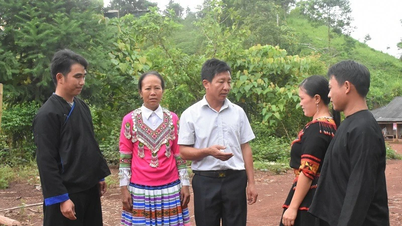
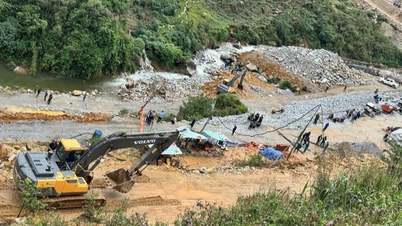
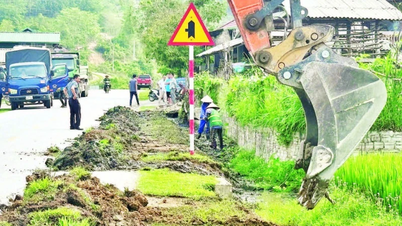










![[Photo] Nearly 3,000 students moved by stories about soldiers](https://vphoto.vietnam.vn/thumb/1200x675/vietnam/resource/IMAGE/2025/5/17/21da57c8241e42438b423eaa37215e0e)








































































Comment (0)